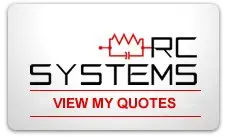FAQ
What type of wireless technology do you offer?
Our radios are Frequency Hopping Spread Spectrum (FHSS), Client / Server in either 900 MHz or 2.4 GHz ranges. FHSS means the radios change frequencies many times per second to avoid interference. Frequency hops range between either 902-928 MHz or 2400–2483.5 MHz. We offer 26 unique hopping patterns to allow collocating of networks within the same area. Each network has a single Server. The Server transmits an information beacon to Clients at the beginning of each new hop frequency. Clients receive the beacon and know how to stay in sync with the network. SenSmart 7000 Monitors are always Clients, while WaveLink Receivers and WaveNet Relayers are configurable as either Clients or Servers. Multiple WaveLink Receivers / WaveNet Relayers are often installed in order to annunciate alarms in numerous locations without costly cabling for the lights / horns. The Server is determined by assessing which WaveLink Receiver or WaveNet Relayer is the most centrally located in relation to all of the devices on the network.
Should I use 900 MHz or 2.4 GHz equipment?
Both 900 MHz and 2.4 GHz are license free in most of North America. However, 900 MHz is recommended in crowded areas because it penetrates obstructions best and transmission power may be adjusted up to 1 Watt. Only 2.4 GHz is license free in most of the world, including the EU and the Middle East. 2.4 GHz transmission power is fixed at 125 mW but the standard rubber antenna has 7dBi gain while the 900 MHz has only 2 dBi. 2.4 GHz does not tolerate obstructions as well as 900 MHz. However, 2.4 GHz antennas tend to be smaller.
What kind if antenna should I order for my SenSmart 7000 Monitor Gas Detectors?
The low cost omnidirectional rubber antennas work well in unobstructed line-of-sight projects up to 2500 feet (762 meters), and obstructed line-of-sight up to 500 feet (152 meters). Yagi antennas are directional, and should not be used to transmit to more than one WaveLink Receiver or WaveNet Relayer unless they are close together. However, Yagi antennas are often used to send signals up to two miles (3.2 km) from SenSmart 7000 Monitors to WaveLink Receivers. Raising the antenna height is very effective for extending range.
What kind if antenna should I order for my WaveLink Receiver or WaveNet Relayer?
WaveLink Receivers and WaveNet Relayers typically require omnidirectional antennas so they can receive signals from all directions. This is because SenSmart 7000 Monitors are usually mounted in many different locations. For shorter distances, these may be the low cost rubber antennas which attach to the enclosure. However, if there are obstructions or large distances between the devices, the higher gain fiberglass omnidirectional antennas should be used. These antennas should be mounted at least 10 feet above the structure where the WaveLink Receiver or WaveNet Relayer is located.
WaveLink Receivers may be equipped with wireless modbus slave and Wi-Fi web server ports which also require antennas. The wireless modbus data may be sent to another of our controllers or DCS. The Wi-Fi Web Server option only supports 2.4 GHz antennas and the Yagi antenna works well for aiming toward a safe area where informative web pages can be accessed via a smart phone, or other web enabled device.
How long do the SenSmart 7000 batteries last?
Batteries typically last 6-9 months in all of the SenSmart 7000 Monitor configurations. Longest life is in single sensor models when the 900 MHz power setting is low and SenSmart 7000 Monitors do not run with alarm conditions for long periods. Transmissions are much more frequent while alarms exist.
What kind of batteries do SenSmart 7000 Monitors use?
They are D-Cell 3.6V lithium. To ensure proper fit with the SenSmart 7000 Monitor battery holder, and optimal performance, please always order replacement part #1000-2691.


